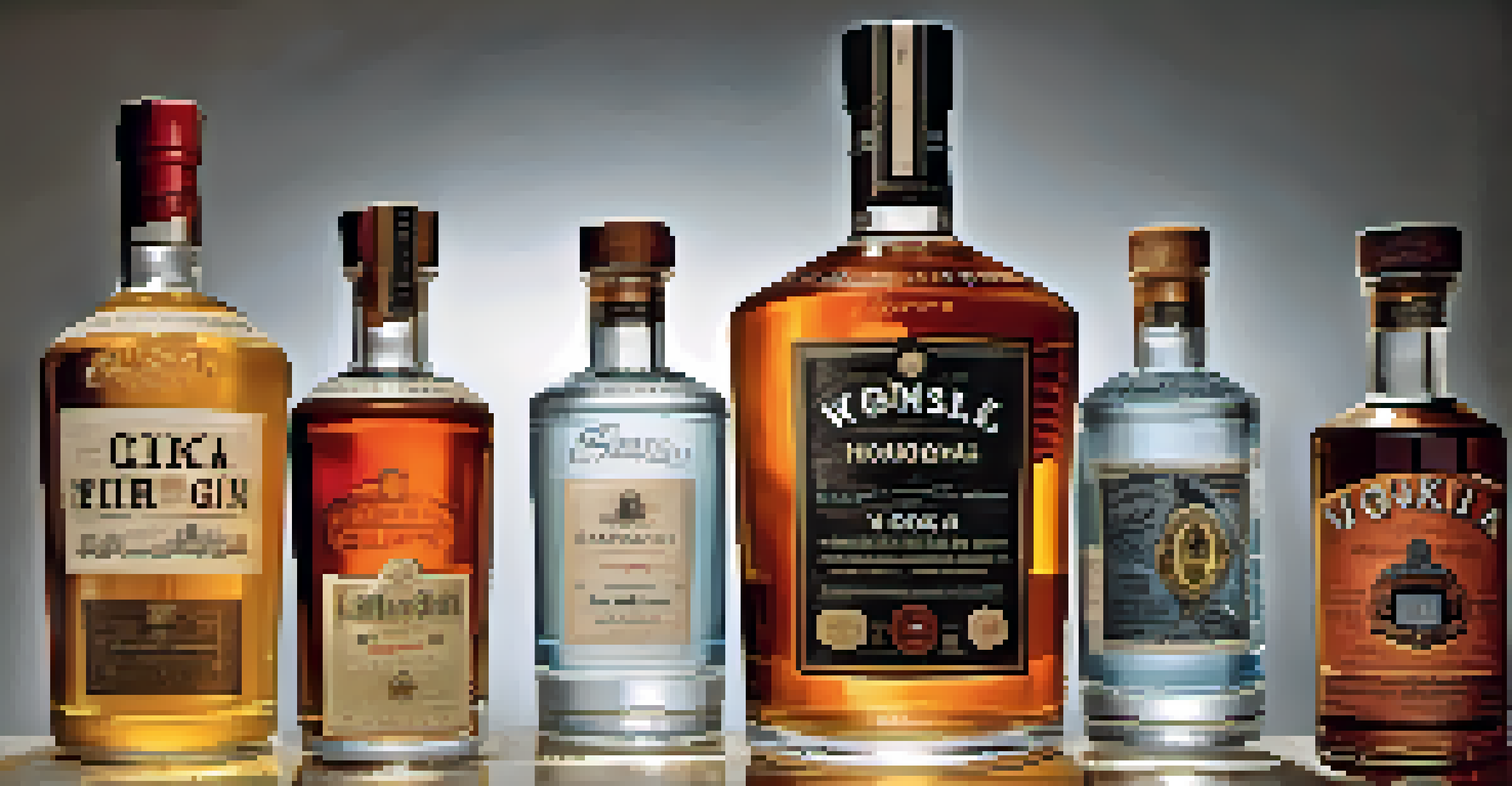Understanding Proof and Alcohol Content in Distilled Spirits

What is Alcohol Content in Distilled Spirits?
Alcohol content refers to the percentage of alcohol in a beverage, typically measured as a percentage by volume (ABV). For instance, if a spirit has an ABV of 40%, this means that 40% of the liquid is pure alcohol. Understanding this percentage is crucial for responsible consumption and appreciation of different spirits.
Alcohol may be man's worst enemy, but the Bible says love your enemy.
In distilled spirits, alcohol content can vary significantly. While beers and wines usually have lower ABV percentages, distilled spirits like whiskey, vodka, and rum can have ABVs ranging from 20% to over 60%. This variation affects how we enjoy these beverages and how they impact our bodies.
Knowing the alcohol content helps consumers make informed choices. For example, a cocktail made with high-proof spirits may deliver a stronger punch than a drink made with lower-proof options. This awareness enhances not only safety but also the overall drinking experience.
Defining Proof: What Does It Mean?
Proof is a scale used to indicate the strength of an alcoholic beverage, and it varies by country. In the United States, proof is calculated as twice the ABV. So, a spirit with 40% ABV would be 80 proof. This system provides a quick reference for understanding the potency of a drink.

The proof system can also be a useful tool for bartenders and consumers alike. When ordering or mixing drinks, knowing the proof helps gauge how strong a cocktail will be. For instance, when blending spirits of different proofs, a bartender can adjust the recipe to achieve the desired strength.
Understanding Alcohol Content
Alcohol content, measured as ABV, is crucial for responsible consumption and enhances the drinking experience.
However, proof can sometimes be misleading, especially for those new to spirits. It's essential to remember that a higher proof does not necessarily mean a better drink; it’s about taste, quality, and balance. Understanding proof helps consumers appreciate the craftsmanship that goes into each spirit.
How is Alcohol Content Measured?
Alcohol content is typically measured using a hydrometer or an alcoholmeter, which are tools that determine the density of the liquid. These instruments provide accurate readings of the alcohol percentage in a beverage, ensuring that producers label their products correctly. This measurement is crucial for both regulatory compliance and consumer information.
I drink to make other people more interesting.
In addition to these tools, distillers often rely on laboratory analysis for precise alcohol content readings. This ensures that every batch of spirits meets quality standards and is safe for consumption. It’s fascinating how science plays a role in the enjoyment of distilled spirits.
Understanding how alcohol content is measured helps consumers appreciate the effort behind their favorite drinks. It also highlights the importance of quality control in the production process, ensuring that what you sip is both enjoyable and safe.
The Relationship Between Proof and Alcohol Content
The relationship between proof and alcohol content is straightforward: proof is simply double the ABV. This means that if you know one, you can easily calculate the other. For example, if a spirit is labeled as 100 proof, you can deduce that it has an alcohol content of 50% ABV.
This relationship is particularly useful for consumers when selecting spirits. Knowing the proof can guide choices for cocktails or sipping spirits, ensuring the right balance of flavor and strength. It allows drinkers to tailor their experience based on taste preferences and desired effects.
Proof Equals Alcohol Strength
Proof is simply double the ABV, helping consumers gauge the strength of their spirits for informed choices.
However, it’s important to approach this information with caution. Higher proof does not always equate to a better flavor profile. A well-crafted spirit at a lower proof can provide a richer, more nuanced experience, emphasizing the artistry involved in distillation.
Why Proof Matters in Distilled Spirits
Proof matters for several reasons, especially concerning responsible drinking. Understanding the proof of a spirit helps consumers gauge how much they should drink to enjoy responsibly. It can prevent overconsumption, ensuring that each sip is savored rather than rushed.
Additionally, proof can influence the choice of cocktail recipes. Bartenders often select spirits based on their proof to create balanced drinks. For instance, high-proof spirits might require more mixers or modifiers to achieve a palatable cocktail that doesn’t overwhelm the drinker.
Finally, knowing the proof can enhance your appreciation for a spirit's complexity. It allows consumers to explore flavors and aromas more deeply, leading to a more enjoyable tasting experience. Ultimately, understanding proof enriches your journey into the world of distilled spirits.
Common Misconceptions About Proof and Alcohol Content
One common misconception is that a higher proof always means a better quality spirit. In reality, taste is subjective and can vary greatly regardless of alcohol content. Many enthusiasts appreciate lower-proof options for their flavor profiles and drinkability.
Another misconception is that all distilled spirits are created equal in terms of alcohol content. Each type of spirit has its own characteristics, and the production methods can greatly influence both flavor and strength. For example, while rum can range from 20% to over 75% ABV, vodka typically hovers around 40% ABV.
Enjoy Spirits Responsibly
Savoring distilled spirits requires moderation and awareness of alcohol content to ensure a safe and enjoyable experience.
Lastly, many people equate proof with the effects of alcohol. While higher proof can lead to quicker intoxication, individual tolerance levels play a significant role. Understanding your limits and the effects of different proofs is essential for enjoying distilled spirits responsibly.
Enjoying Distilled Spirits Responsibly
Enjoying distilled spirits responsibly is key to a pleasurable experience. This means being aware of both the alcohol content and your own limits. Whether you’re sipping a neat whiskey or enjoying a cocktail, moderation is essential for maintaining enjoyment and safety.
It's also wise to hydrate and eat before indulging in spirits. Consuming food helps slow the absorption of alcohol, allowing for a more balanced experience. This is especially important when enjoying higher proof spirits, which can deliver a stronger punch.

Ultimately, the goal is to savor the flavors and craftsmanship of distilled spirits. By understanding proof and alcohol content, you can make informed choices that enhance your drinking experience while keeping safety in mind. Cheers to responsible enjoyment!